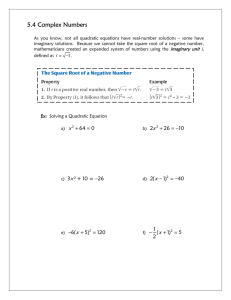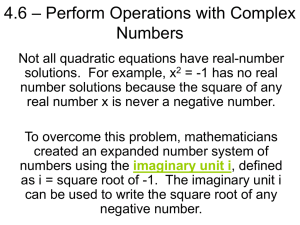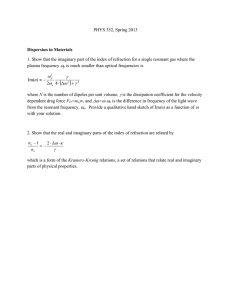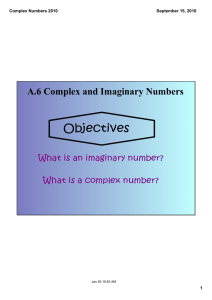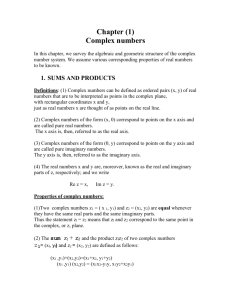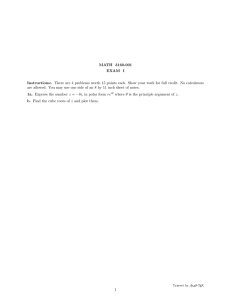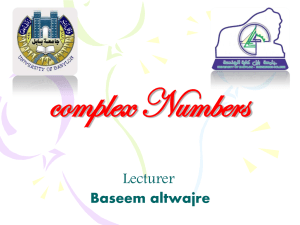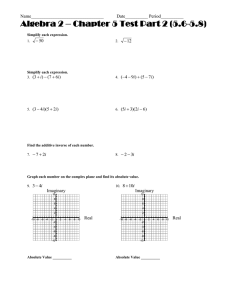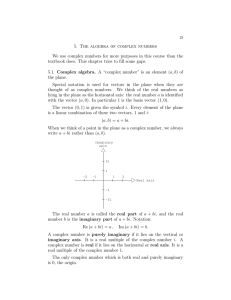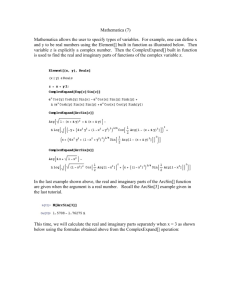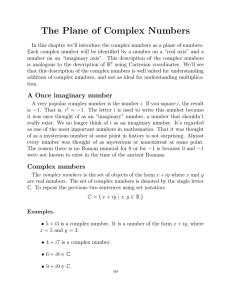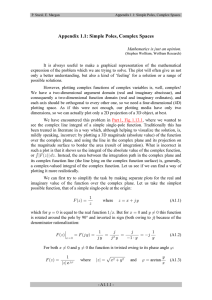This is a tutorial about complex numbers. It’s an introduction... them before.
advertisement
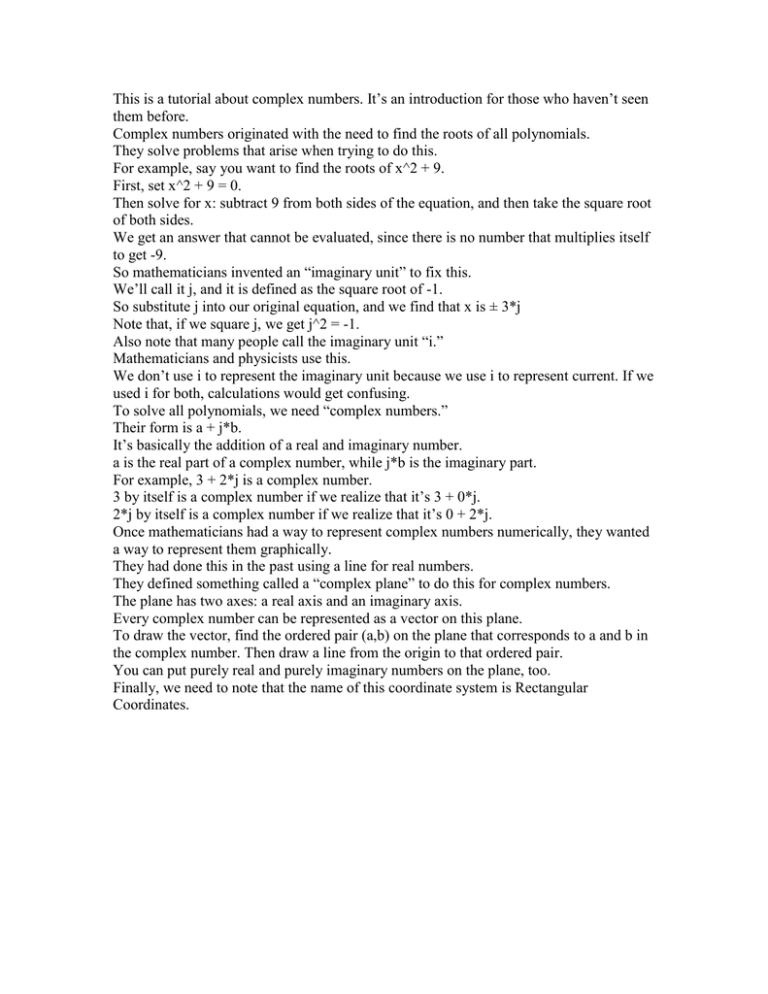
This is a tutorial about complex numbers. It’s an introduction for those who haven’t seen them before. Complex numbers originated with the need to find the roots of all polynomials. They solve problems that arise when trying to do this. For example, say you want to find the roots of x^2 + 9. First, set x^2 + 9 = 0. Then solve for x: subtract 9 from both sides of the equation, and then take the square root of both sides. We get an answer that cannot be evaluated, since there is no number that multiplies itself to get -9. So mathematicians invented an “imaginary unit” to fix this. We’ll call it j, and it is defined as the square root of -1. So substitute j into our original equation, and we find that x is ± 3*j Note that, if we square j, we get j^2 = -1. Also note that many people call the imaginary unit “i.” Mathematicians and physicists use this. We don’t use i to represent the imaginary unit because we use i to represent current. If we used i for both, calculations would get confusing. To solve all polynomials, we need “complex numbers.” Their form is a + j*b. It’s basically the addition of a real and imaginary number. a is the real part of a complex number, while j*b is the imaginary part. For example, 3 + 2*j is a complex number. 3 by itself is a complex number if we realize that it’s 3 + 0*j. 2*j by itself is a complex number if we realize that it’s 0 + 2*j. Once mathematicians had a way to represent complex numbers numerically, they wanted a way to represent them graphically. They had done this in the past using a line for real numbers. They defined something called a “complex plane” to do this for complex numbers. The plane has two axes: a real axis and an imaginary axis. Every complex number can be represented as a vector on this plane. To draw the vector, find the ordered pair (a,b) on the plane that corresponds to a and b in the complex number. Then draw a line from the origin to that ordered pair. You can put purely real and purely imaginary numbers on the plane, too. Finally, we need to note that the name of this coordinate system is Rectangular Coordinates.
